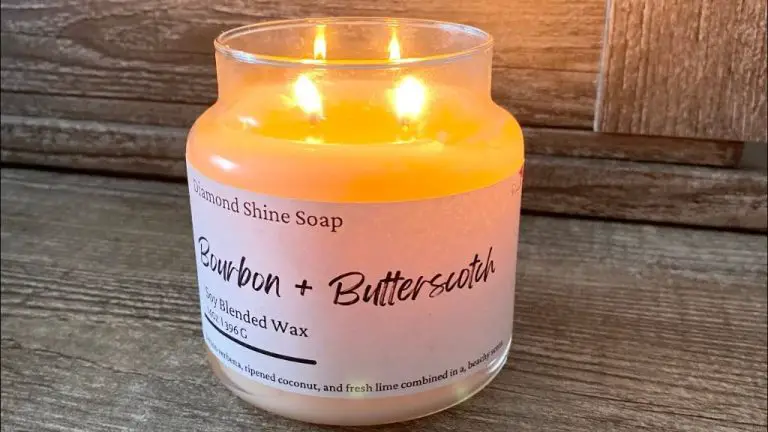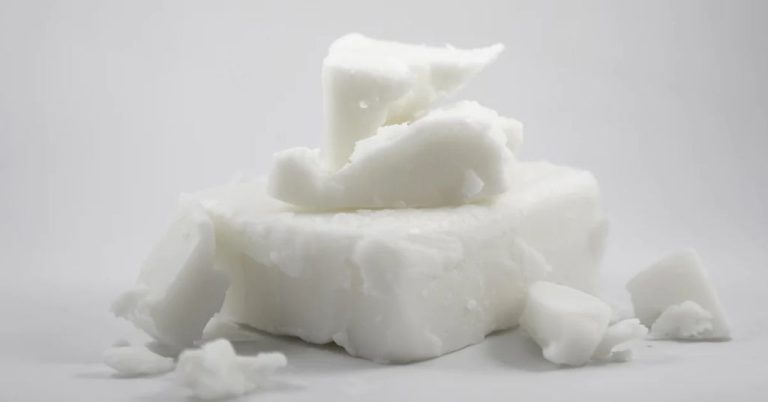What Kind Of Wax Warmer Is Better?
Wax warmers have become an increasingly popular home fragrance option over the last decade. They offer an alternative to traditional candles, providing an efficient, customizable, and safe way to scent your home. Wax warmers work by melting scented wax, allowing it to slowly diffuse into the air. The wax is heated in a small dish, melting just a few cubes at a time. As it warms, the wax releases its aroma without the need for a wick or flame.
Compared to burning candles, wax warmers are flameless and do not release smoke or soot. The wax cubes come in an endless variety of scents, allowing you to switch up fragrances easily. Wax warmers also provide more control over the strength of fragrance compared to candles. With no open flame, they can be safer to use around children and pets. Their design flexibility allows wax warmers to complement any room’s decor. For those looking for an effective home fragrance option with the benefits of convenience, variety, and safety, wax warmers are an excellent choice worth considering.
Types of Wax Warmers
There are a few main types of wax warmers to choose from:
Candle Warmers
Candle warmers are designed to melt regular candle wax safely without the need for an open flame. They use a low wattage light bulb or heating element to slowly warm the wax in a dish or potpourri tray. This allows the wax to melt and release its fragrance gently over time. Candle warmers are a safer option compared to burning candles directly.
Electric Warmers
Electric warmers plug directly into an outlet and use an internal heating element to melt wax cubes or tarts. Many electric warmers have interchangeable dish designs and temperature settings to customize the melt rate. They provide consistent fragrance without the maintenance of flame-based options.
Lamp Ring Warmers
Lamp ring warmers attach by wire frame onto the neck or base of a existing lamp. The heat from the bulb indirectly warms the wax in the metal ring surrounding it. They provide a simple way to add fragrance to any room with a lamp. Just switch on the light to release the scent.
Light Bulb Warmers
Light bulb wax warmers screw into any standard bulb socket. They have a small melting plate attached that sits above an interior light bulb to warm the wax. Like lamp rings, the light provides indirect gentle heating.
Ceramic Warmers
Ceramic warmers use a low-wattage heating element concealed within an attractive ceramic housing. Wax cubes rest in a tray atop the ceramic to slowly melt over time. Many ceramic warmers have decorative designs to coordinate with home decor.
Scented Oil Warmers
Some warmers are designed specifically for scent oils rather than solid wax. These often have a small built-in heated area or bowl in which to place a few drops of fragrant oil. Heat helps diffuse the oil aroma into the surrounding air.
Electric vs. Non-Electric
When choosing between electric and non-electric wax warmers, two key factors to consider are convenience/control versus ambience.
Electric warmers offer more convenience and control over the wax melting process. They can be plugged in and turned on/off easily to control when wax is being warmed and fragranced released. Temperature can often be adjusted to customize the wax melt rate. Timers allow setting electric warmers to turn on/off automatically at set times. This makes it easy to have wax warming consistently without constantly monitoring it.
Non-electric warmers like candle or tea light warmers rely on the existing heat source to melt the wax. This creates more of an ambient, flame-like experience akin to burning candles. The wax melt rate cannot be controlled as easily and relies more on the external heat source. Non-electric warmers are more dependent on monitoring the external heat to avoid issues with the wax getting too hot or not warming enough. They create a more natural, flame-like visual appeal.
Those wanting the convenience and customization of controlling the wax warming experience may prefer electric warmers. For those seeking a more ambient, candle-like experience, non-electric warmers are a better option.
Heating Mechanisms
There are a few different heating mechanisms used in wax warmers:
Light Bulb – Some electric warmers have a standard light bulb that heats up to melt the wax. The bulb shine through a translucent dish to provide ambiance. The temperature can’t be adjusted.
Ceramic Plate – Electric warmers may use a ceramic plate which is heated by an internal electric heating element. These provide more even warming than a bulb and allow adjusting temperature.
Low Temp – Low temperature warmers maintain a temperature under 150°F. This is considered safest for use around kids and pets. However, some wax melts optimally at higher temperatures.
High Temp – Some warmers allow temperatures over 150°F or even up to 200°F. These can melt wax quickly and fully but require more caution around kids and pets.
Fragrance Options
When it comes to fragrance options for wax warmers, there are a few main types to consider:
Wax melts – These are small pieces of scented wax, usually around 1 ounce each. They fully melt into liquid oil when heated, allowing the fragrance to be dispersed. Wax melts come in a huge variety of scents.
Cubes – Similar to wax melts but shaped into cubes rather than small discs. Cubes melt slower than melts so the fragrance lasts a bit longer.
Tarts – Tarts are shaped like a small pie tart. They are thicker than melts so also tend to melt slower and have a stronger fragrance throw.
Oils – There are also fragrance oils designed specifically for wax warmers. Only a small amount of oil is needed. Ensure your wax warmer is compatible before using oils.
Gels – Gel wax provides an ultra slow burn, absorbing and releasing fragrance gently over several days. Not all wax warmers can accommodate gel wax.
Most wax warmers are pretty flexible in regards to what type of wax you can use. Just pay attention to any warnings from the manufacturer. For example, some warmers may get too hot for gel wax. Test out a few different wax types to see which you prefer.
Design Aesthetics
When it comes to wax warmer design aesthetics, there are a few main considerations: color, style, and size options.
Color is perhaps the most important aesthetic factor. Wax warmers today come in practically every color imaginable. From basic black or white, to vibrant shades of red, green, blue, and more. You can match your warmer to your existing decor, or make it a bold accent piece. Metallic warmers in brass, copper, and silver are also popular choices. The color options are nearly endless.
Style is another key consideration. Ceramic warmers often have a more traditional vase or bowl shape. However, you can also find modern angular warmers, cute animal-shaped warmers, and more unique options. The style you choose depends on your personal taste and decor.
Finally, wax warmers come in a wide range of sizes. Small travel-size warmers are just a few inches tall for portability. While larger warmers can warm entire rooms. Consider the size of the space you want to scent and how much fragrance you need. Larger warmers also allow you to use bigger wax melts.
With so many choices today, you’re sure to find a wax warmer with the perfect design aesthetics for your needs.
Safety Considerations
When using any type of wax warmer, it’s important to keep safety in mind. Wax warmers do pose some potential hazards that you’ll want to be aware of.
One of the biggest concerns with wax warmers is the fire hazard. Both electric and non-electric warmers use high temperatures to melt wax, making the wax and warmer surfaces very hot. This means there’s a risk of fire if wax drips or the warmer gets knocked over. To prevent fires, make sure your warmer is on a stable, level surface out of high traffic areas. Keep the cord tucked away and never leave a wax warmer unattended. For electric warmers, look for units with auto shut-off features in case the warmer gets tipped over.
Additionally, be mindful of the wicks in wax melts and candles. Lead core wicks were common years ago, but have largely been phased out due to health concerns. Look for lead-free wicks to avoid heavy metal exposure. Trim wicks to 1⁄4 inch before lighting to prevent excess sooting and large flames.
Wax warmers also pose risks for kids and pets. The hot wax can cause burns if spilled or dripped. Ingestion of wax can also be hazardous. Keep warmers up and out of reach of children and pets so they can’t access the wax or knock the unit over. Supervise use around young kids and pets.
By taking some simple precautions, you can enjoy wax warmers safely. Just be sure to use them properly and monitor them when in use.
Cost Comparison
When deciding between electric and non-electric wax warmers, it’s important to consider both the initial purchase cost as well as ongoing costs over time.
Electric warmers tend to have a higher upfront cost, often between $10-$40 for a plug-in model. However, they usually don’t require any additional purchases after the initial investment. Non-electric warmers on the other hand, like candle or ceramic warmers, can be found for as little as $5-$15. But you’ll need to continually buy replacement tea light candles, wax melts or oils to keep them running over time.
Here’s a breakdown of the costs:
- Electric warmers: Higher initial cost of $10-$40, but no ongoing supply costs.
- Candle warmers: Low initial cost of $5-$15, but need to continually buy new tea lights ($5 for a pack of 24).
- Ceramic warmers: Low initial cost of $10-$20, but need to continually buy wax melts or oils ($3-$5 each).
Over the long run, electric warmers may save money compared to non-electric options. But the lower startup cost of candle/ceramic warmers can be appealing for those on a tight budget.
Maintenance
Proper maintenance is key to ensure your wax warmer continues working safely and effectively. Here are some tips for cleaning and replacing wax in your warmer:
Cleaning
It’s important to clean your wax warmer regularly to remove wax residue and dust. Allow the warmer to fully cool and unplug it before cleaning. Use a soft cloth to wipe away any visible wax buildup or dust.
For more thorough cleaning, fill the basin with warm water and a small amount of mild dish soap. Let it soak for 10-15 minutes to loosen stuck-on wax, then scrub with a soft brush or sponge. Rinse thoroughly and allow to fully dry before using again.
Replacing Wax
Replace wax cubes or melts frequently to enjoy the strongest fragrance. The frequency depends on usage, but expect to replace wax every 1-2 weeks. Allow warmer to fully cool before removing old wax to avoid burns.
Use wax specifically designed for warmers and avoid regular candles, as these may not melt properly. Insert new wax cubes/melts into the basin, following the warmer instructions for how much wax to use. Enjoy your refreshed fragrance!
Conclusions
When deciding between electric and non-electric wax warmers, consider your specific needs and preferences.
Electric warmers are ideal if you want:
- Maximum fragrance diffusion and consistency
- A high-tech, decorative piece
- Effortless operation with some safety precautions
Non-electric warmers are great if you prefer:
- A natural, flameless heat source
- Portability and versatility
- Lower costs and less maintenance
Both warmer styles can effectively melt wax and disperse inviting scents. Consider your priorities, usage, and surroundings when deciding which type best suits your needs and home décor.





